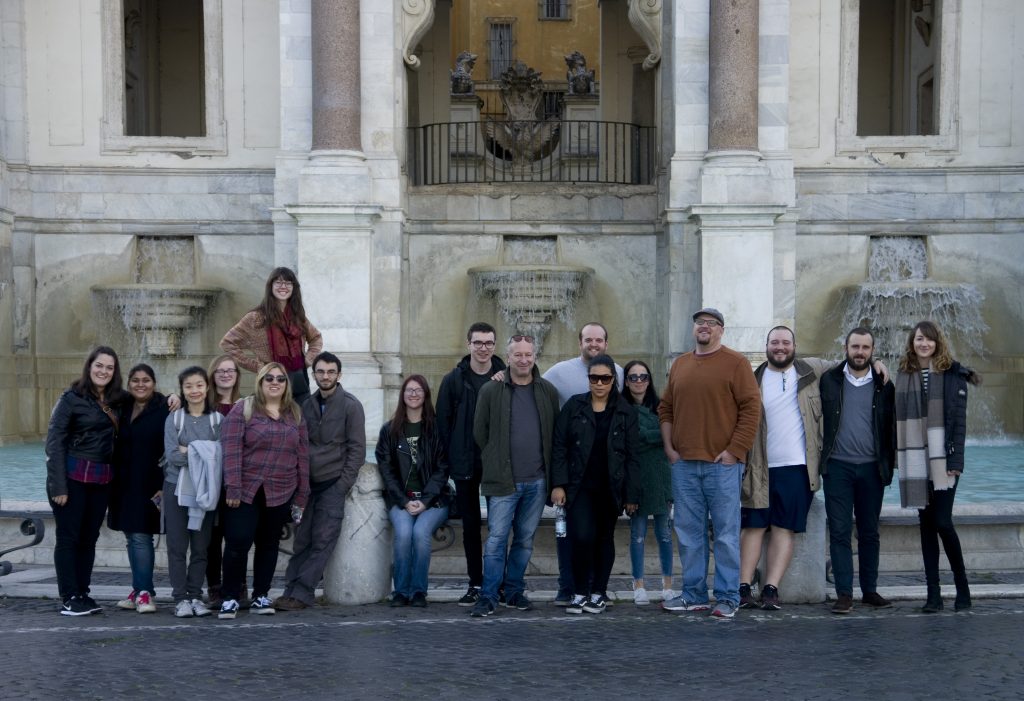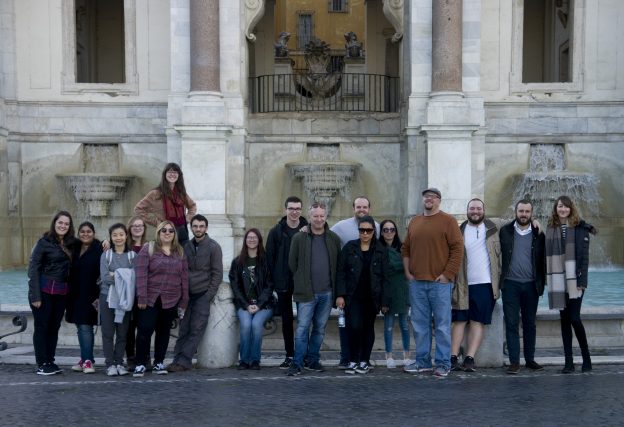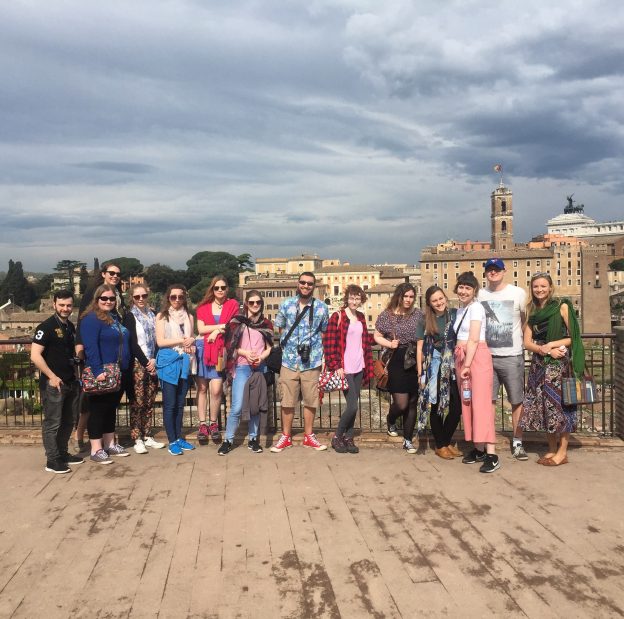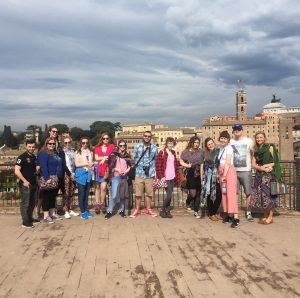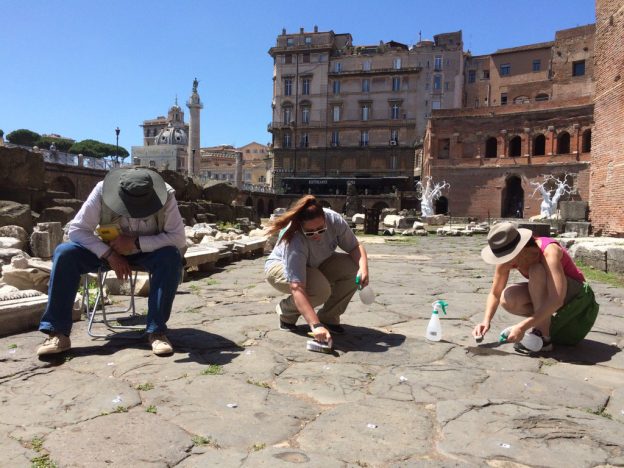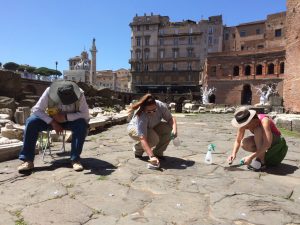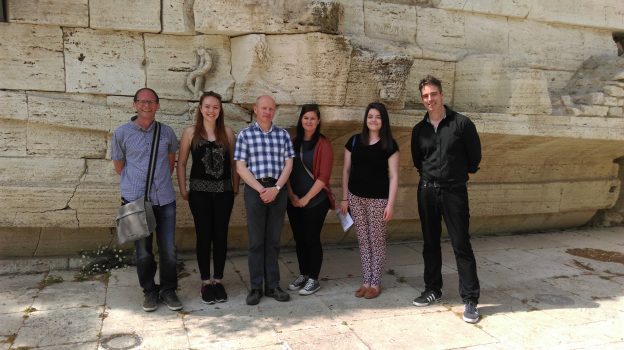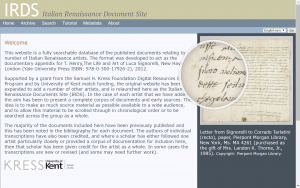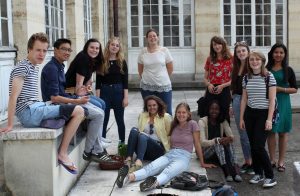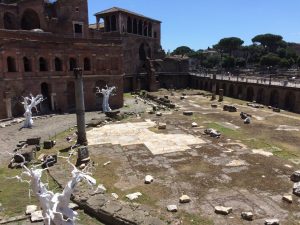As part of their orientation, all of our 2017/18 cohort who will be spending their spring term in Rome got to join us on a 3 day trip to Rome to familiarise themselves with the area of the Rome School of Classical and Renaissance studies’ centre.

The trip began nice and early as we caught a coach from campus to Gatwick for our flight, by the time we arrived at the airport the students had time for breakfast and a quick sit down before we boarded the plane. We arrived in Rome at lunch time, greeted by our taxis we took the students to their Hotel in the heart of Trastevere. Once the students were settled they were free to explore Rome for the afternoon before rejoining us in the evening. That evening the students were treated to a dinner by David Nightingale, the Senior Deputy Vice Chancellor of Kent university, and Jeremy Carrette, the Dean for Europe. They got to try some local cuisine in the form of Pasta, Pizza and a selection of food for starters.
The next morning the students were treated to a wonderful tour of the Castel Sant’Angelo by SECL’s Christopher Burden-Strevens. This discussed how the castel had adapted over the years, from a mausoleum to the museum that it is today. Following this, the students were also taken to San Luigi dei Francesi, a Carravagio chapel, by Martin Hammer from the Arts department.
These two lectures gave the students a feel for the type of teaching that they would be receiving when they arrive in January. With academics out in Rome and almost weekly trips to visit these impressive monuments, it really sets the MA’s apart from a classroom-based UK masters course.

The afternoon again was given to the students to explore the city, though most of them on our recommendation used the time to visit the accommodation arrangements that they have for the spring. This way they are then reassured that they know the location and the details of their accommodation before they arrive in January.
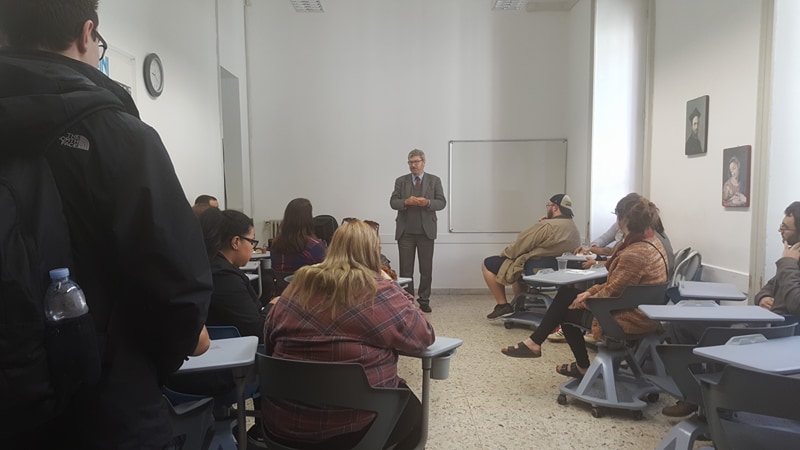
The following morning we were up bright and early again to greet the students and take them for an introduction at the Rome school of Classical and Renaissance studies’ centre at American University of Rome. They were greeted by the president of AUR, Richard Hodges, and the Graduate Studies Coordinator, Susan Kaesz, as well as other academic and administrative staff who welcomed them to the centre and then gave them a tour of the facilities.
Following this introduction to the Rome centre, the students also received tours of two of the Academic Schools in Rome, the Norwegian institute and the American Academy of Rome, in an effort to highlight to them the different institutions that were available to them as libraries and study spaces during their term abroad. Following this the students had a small amount of free time to shop for souvenirs or grab one last gelato before we boarded the plane back to the UK.
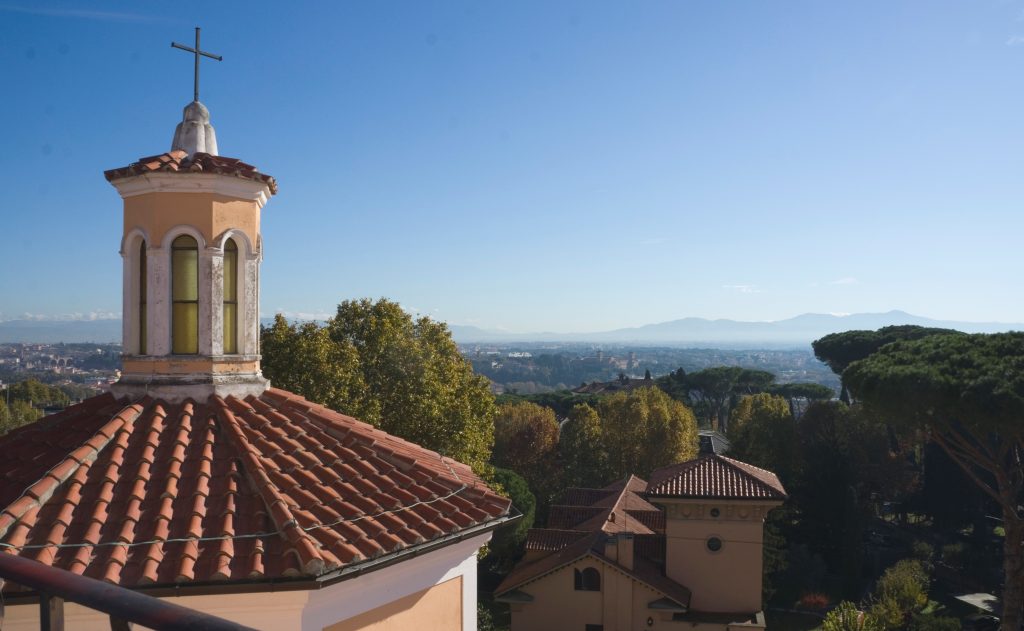
The large provision of this trip is included in the students course fees. The university organises travel, flights and accommodation, leaving the students to only cover a few meals and any personal spending that they wish to do. We feel it is an invaluable experience in making the students aware of the location and the facilities available to them whilst they are in Rome. The trip is also a vital first step in their relocation process, making them feel comfortable enough to call the eternal city home.
